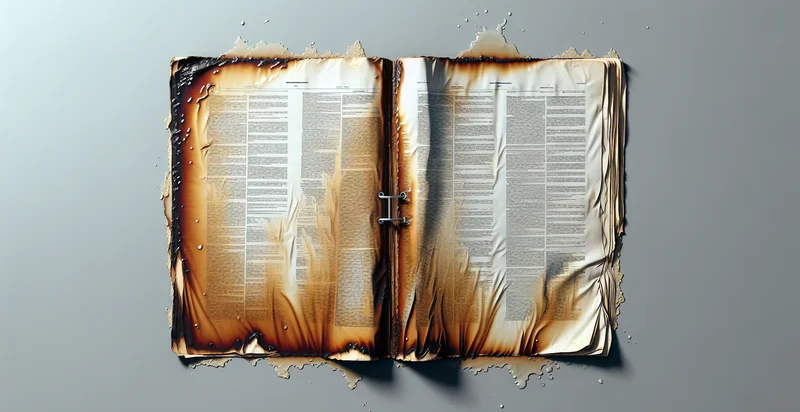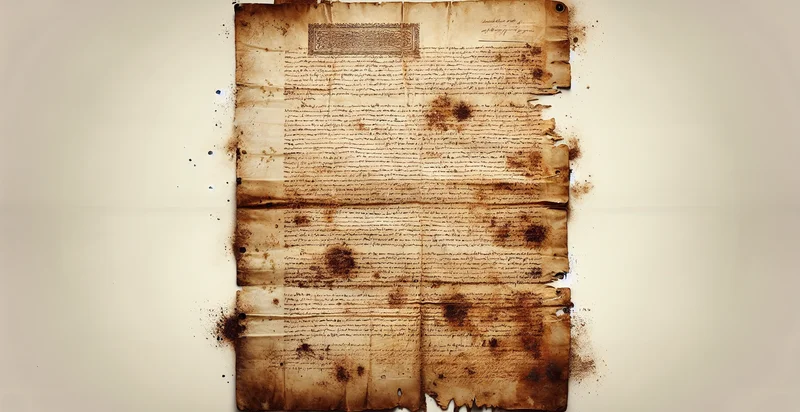Identify if document has water damage
using AI
Below is a free classifier to identify if document has water damage. Just upload your image, and our AI will predict if the document has water damage - in just seconds.

Contact us for API access
Or, use Nyckel to build highly-accurate custom classifiers in just minutes. No PhD required.
Get started
import nyckel
credentials = nyckel.Credentials("YOUR_CLIENT_ID", "YOUR_CLIENT_SECRET")
nyckel.invoke("if-document-has-water-damage", "your_image_url", credentials)
fetch('https://www.nyckel.com/v1/functions/if-document-has-water-damage/invoke', {
method: 'POST',
headers: {
'Authorization': 'Bearer ' + 'YOUR_BEARER_TOKEN',
'Content-Type': 'application/json',
},
body: JSON.stringify(
{"data": "your_image_url"}
)
})
.then(response => response.json())
.then(data => console.log(data));
curl -X POST \
-H "Content-Type: application/json" \
-H "Authorization: Bearer YOUR_BEARER_TOKEN" \
-d '{"data": "your_image_url"}' \
https://www.nyckel.com/v1/functions/if-document-has-water-damage/invoke
How this classifier works
To start, upload your image. Our AI tool will then predict if the document has water damage.
This pretrained image model uses a Nyckel-created dataset and has 2 labels, including Clean and Water Damaged.
We'll also show a confidence score (the higher the number, the more confident the AI model is around if the document has water damage).
Whether you're just curious or building if document has water damage detection into your application, we hope our classifier proves helpful.
Related Classifiers
Need to identify if document has water damage at scale?
Get API or Zapier access to this classifier for free. It's perfect for:
- Insurance Claim Assessment: The water damage identifier can be utilized by insurance companies to quickly assess the condition of documents submitted as part of a claim. This function enables automatic flagging of documents that may require further inspection, thus speeding up the claims processing time.
- Archive Preservation: Libraries and archival institutions can employ the water damage identifier to evaluate the condition of historical documents and books stored in humid environments. This proactive approach helps in taking timely conservation actions, preserving invaluable resources for future generations.
- Financial Document Management: Banks and financial institutions can integrate the water damage identifier into their document management systems to evaluate the state of sensitive financial documents. By identifying affected records, organizations can take steps to restore them or ensure safe digitization to prevent data loss.
- Real Estate Closure Processes: In real estate transactions, the water damage identifier can assist title companies and real estate agents by screening property-related documents, such as inspection reports and warranties. Quickly identifying any water damage can help in renegotiation or educate buyers about potential risks, fostering informed decision-making.
- Historical Research Facilitation: Researchers working with archival datasets can leverage the water damage identifier to assess the integrity of the documents they are studying. By identifying damaged materials early, researchers can focus on the most viable documents, improving research efficiency and accuracy.
- Legal Document Verification: Law firms can use the water damage identifier to ensure that critical legal documents are preserved in their original state. This function provides security measures to maintain integrity and continuity in legal proceedings, reducing the likelihood of disputes due to unusable documents.
- Document Restoration Services: Companies specializing in document restoration can implement the water damage identifier to prioritize documents for their restoration services. Identifying affected materials allows for efficient allocation of resources, enhancing customer service by addressing the most critical restoration needs first.


